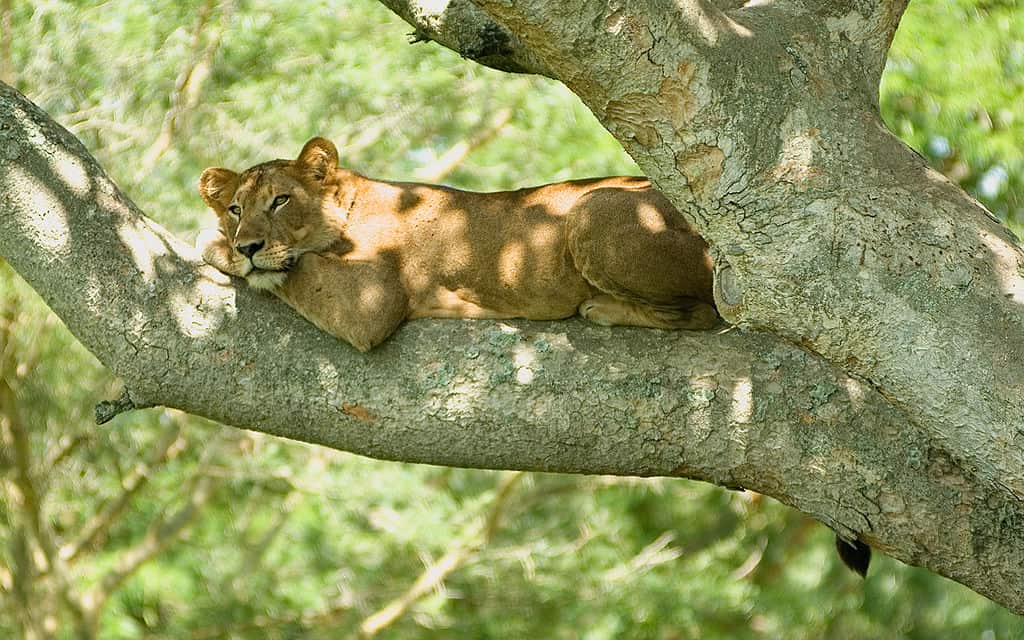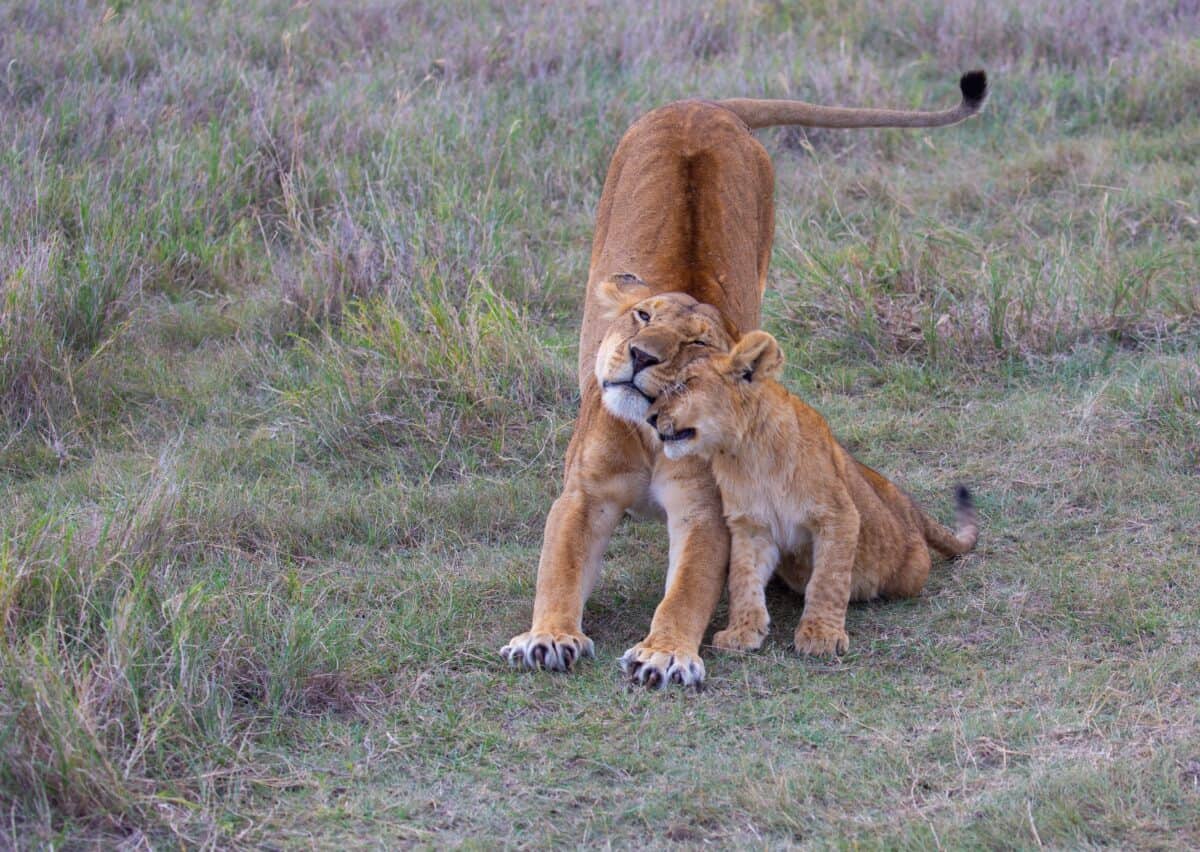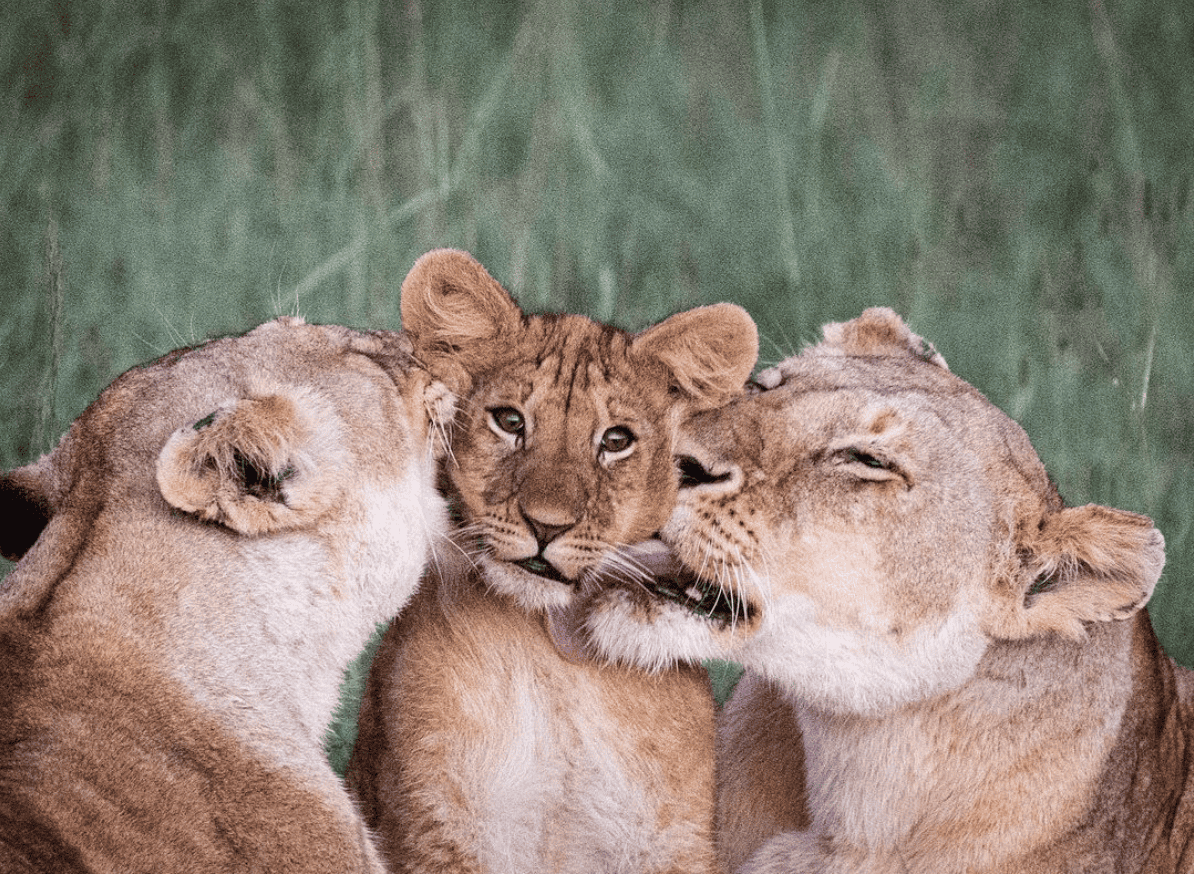In the vast plains of Kenya during the 1950s, an extraordinary story unfolded that would forever change humanity’s relationship with wildlife. Elsa the lioness became more than just an animal—she became a symbol of the profound bond possible between humans and wild creatures. Her journey from orphaned cub to free-living lioness, guided by conservationists George and Joy Adamson, challenged conventional wisdom about predators and inspired a global conservation movement. Before Elsa, lions were primarily viewed as dangerous trophies or zoo exhibits; after her story touched millions through the book and film “Born Free,” the world began to see wild animals as sentient beings deserving of compassion and freedom. This is the remarkable tale of a lioness who opened hearts, changed minds, and left an indelible paw print on conservation history.
The Fateful Beginning: Elsa’s Rescue

Elsa’s story began in February 1956 in Kenya’s Northern Frontier District. George Adamson, a senior game warden, was forced to shoot a man-eating lioness in self-defense. Tragically, the lioness had been protecting her three cubs. Feeling responsible for orphaning the young lions, George brought the cubs home to his wife Joy. The smallest and weakest of the three was named Elsa, and she would go on to forge the deepest bond with the couple.
The two larger cubs, which they named Big One and Lustica, were eventually sent to Rotterdam Zoo as they grew too large and wild to manage safely. But something about little Elsa was different—she showed a remarkable capacity for gentleness and connection with humans while maintaining her wild instincts. This unique temperament made the Adamsons wonder if something unprecedented might be possible: could they teach this lioness to survive in the wild despite her early human contact?
Life With the Adamsons: Elsa’s Formative Months

During her first year, Elsa lived with George and Joy Adamson at their compound in Kenya. Unlike zoo animals or traditional pets, Elsa was raised with the deliberate intention of maintaining her wild nature. The Adamsons took her on daily walks in the bush, allowing her to develop her natural instincts. Joy described how they would take Elsa swimming in rivers and climbing trees, activities that helped build her strength and agility. She slept in their bed at night, forming an emotional bond that transcended species barriers.
What made the Adamsons’ approach revolutionary was their balance between affection and discipline. They didn’t treat Elsa as a domestic animal but respected her lioness nature. When she played too roughly, they corrected her behavior. They never fully domesticated her but instead acted as surrogate parents preparing her for independence. This method of raising Elsa—with love but without humanizing her—became the foundation for modern wildlife rehabilitation techniques that prioritize eventual release.
The Revolutionary Decision: Returning Elsa to the Wild

As Elsa matured, the Adamsons faced a critical decision. Convention dictated that captive-raised lions could never be released—they would either remain in captivity or be sent to zoos. But George and Joy observed Elsa’s strong wild instincts and made an unprecedented choice: they would attempt to reintroduce her to her natural habitat. This decision was revolutionary in the 1950s when wildlife conservation was in its infancy and most believed human-raised predators could never survive independently.
The reintroduction process began when Elsa was about a year old. The Adamsons took her to a remote camp in Meru National Park, away from human settlements. They gradually reduced their contact while teaching her to hunt. The process was painfully slow and fraught with setbacks. Elsa initially struggled to make kills and would return to camp hungry. Conservation experts predicted failure, warning that a human-raised lioness could never develop the skills needed to survive. But the Adamsons persisted, their revolutionary belief in Elsa’s capacity for wildness eventually vindicated as she began making successful hunts.
Learning to Hunt: Elsa’s Path to Independence

Teaching Elsa to hunt proved to be one of the most challenging aspects of her return to the wild. Unlike lions raised by their mothers, who learn hunting techniques through observation and practice from an early age, Elsa had missed these crucial developmental lessons. George Adamson took on the role of hunting mentor, though he himself couldn’t demonstrate lioness techniques. He began by bringing Elsa to fresh kills, allowing her to understand the connection between prey animals and food.
Progress came in small increments. Joy Adamson recorded in her diary how Elsa’s first attempts at hunting were clumsy and ineffective. She would often stalk animals correctly but miss the crucial final pounce. After months of practice, Elsa made her first confirmed independent kill—a waterbuck she brought down near their camp. This milestone marked a turning point in her journey toward self-sufficiency. The Adamsons gradually increased the intervals between their visits, allowing Elsa longer periods to hunt and survive on her own. By the time she was three years old, she could reliably feed herself, though she maintained her bond with her human family.
Finding Love: Elsa’s Life as a Wild Lioness

Perhaps the most compelling evidence of Elsa’s successful reintegration into the wild came when she began interacting with other lions. Initially, she was nervous and submissive around wild lions, lacking the social skills normally learned in a pride. The Adamsons worried she might be rejected or even killed by territorial lions. But nature proved more adaptable than expected. After several tense encounters with local lions, Elsa eventually attracted the attention of a male lion.
In late 1959, Joy and George discovered Elsa had mated and was pregnant. This natural development confirmed that wild lions had accepted her fully as one of their own. In February 1960, Elsa gave birth to three cubs—two males and one female—in a secluded cave. She brought her cubs to meet the Adamsons when they were about two months old, an extraordinary moment that bridged the human and lion worlds. The cubs were understandably wary of humans, having been raised as fully wild lions. This generation gap represented the ultimate success of the experiment—Elsa’s cubs would live completely natural lives, untouched by human intervention, while their mother maintained her unique position between worlds.
Born Free: How Elsa’s Story Reached the World

While Elsa was learning to survive in the wild, Joy Adamson was documenting their extraordinary journey. An accomplished painter and naturalist, Joy had been recording detailed observations and taking photographs throughout Elsa’s life. In 1960, she compiled these materials into a manuscript that would become the international bestseller “Born Free.” The book captivated readers with its intimate portrayal of Elsa’s personality and the deep bond she shared with the Adamsons while still embracing her wild nature.
Published in more than 40 languages, “Born Free” sold over five million copies worldwide, introducing Elsa’s story to a global audience. The book’s success was followed by two sequels, “Living Free” and “Forever Free,” which chronicled Elsa’s life as a wild mother and the lives of her cubs. In 1966, the story made an even greater cultural impact when “Born Free” was adapted into an award-winning film starring Virginia McKenna and Bill Travers as Joy and George Adamson. The film’s iconic soundtrack, including the Academy Award-winning title song, further cemented Elsa’s place in popular culture. Through these creative works, a single lioness’s story reached millions, transforming public attitudes toward wildlife.
A Premature Farewell: Elsa’s Untimely Death

Tragically, Elsa’s remarkable life was cut short just as she had fully established herself as a wild lioness and mother. In January 1961, Joy Adamson found Elsa in a weakened state during one of her visits to check on the lioness and her cubs. Despite immediate veterinary intervention, Elsa died a few days later from babesia, a tick-borne disease similar to malaria that affects many African carnivores. She was only five years old, with lions in the wild typically living to 10-14 years of age.
Her death devastated the Adamsons and fans worldwide who had followed her story. Yet even in death, Elsa’s legacy continued to grow. The Adamsons remained committed to her three cubs, monitoring them from a distance until they were fully independent. The female cub, whom they named Jespah, went on to have cubs of her own, extending Elsa’s genetic legacy in the wild. George Adamson buried Elsa on a beautiful hillside in Meru National Park, marking her grave with a simple stone. Today, visitors to the park can still visit this memorial to the lioness who changed the world’s perception of wildlife conservation.
The Born Free Foundation: Elsa’s Enduring Legacy

Inspired by Elsa’s story and their experience portraying the Adamsons in the film “Born Free,” actors Virginia McKenna and Bill Travers established Zoo Check in 1984, which later evolved into the Born Free Foundation. The organization was founded on the principle that wild animals belong in the wild, not in captivity—a direct extension of the philosophy demonstrated through Elsa’s rehabilitation. Today, the Born Free Foundation operates internationally, working to prevent animal suffering, protect threatened species, and keep wildlife in the wild.
The foundation has rescued numerous lions and other wild animals from inadequate zoos, circuses, and private ownership, placing them in sanctuaries that provide more natural conditions. They also fund anti-poaching initiatives, habitat protection, and community education programs across Africa and Asia. In Kenya, where Elsa’s story began, Born Free supports the Meru Lion Conservation Project, protecting the descendants of lions that might include Elsa’s own bloodline. Through these ongoing efforts, a single lioness’s life continues to generate positive change for wildlife worldwide, more than six decades after her death.
Changing Conservation: The “Elsa Paradigm”

Prior to Elsa, wildlife conservation was primarily focused on segregating animals from humans through hunting restrictions and protected areas. While these measures were important, they maintained an emotional distance between people and wildlife. Elsa’s story introduced what some conservationists now call the “Elsa Paradigm”—the idea that emotional connection to individual animals can drive broader conservation action. By allowing people to know Elsa as an individual with a personality, needs, and desires, the Adamsons created a gateway for public empathy with all lions and, by extension, all wildlife.
This paradigm shift influenced modern conservation in profound ways. Organizations now regularly use “ambassador animals” and individual stories to build public support for species protection. The rehabilitation and release model pioneered with Elsa has been refined and applied to countless species, from orphaned elephants to injured sea turtles. Perhaps most importantly, the Adamsons’ work with Elsa challenged the artificial dichotomy between “wild” and “tame,” showing that respectful human intervention can support rather than diminish an animal’s wild nature—a concept that undergirds modern wildlife rehabilitation ethics.
Beyond Elsa: The Adamsons’ Continued Conservation Work

Following Elsa’s death, George and Joy Adamson continued their pioneering conservation work, though they eventually separated to pursue different projects. George established a camp at Kora National Reserve in Kenya, where he successfully rehabilitated and released several other lions, including Boy (who had starred in the “Born Free” film) and the famous Christian, a lion purchased from Harrods department store in London and later returned to the wild. His methods became more systematic based on what he had learned with Elsa, and he documented these experiences in his books “My Pride and Joy” and “Bwana Game.”
Joy focused her efforts on leopard rehabilitation, most notably with a leopard named Penny, whose story she told in “The Spotted Sphinx.” She also became increasingly involved in raising awareness about conservation through her writing and public appearances. Tragically, both Adamsons met violent ends—Joy was murdered by a disgruntled employee in 1980, and George was killed by bandits or poachers in 1989. Despite these traumatic conclusions to their lives, their revolutionary approach to wildlife conservation continued to influence generations of conservationists. Organizations like the George Adamson Wildlife Preservation Trust continue their work today, supporting anti-poaching efforts and habitat protection in the areas where the Adamsons once worked with Elsa.
Cultural Impact: How Elsa Changed Public Perception of Predators

Before Elsa, lions in Western culture were primarily portrayed as dangerous beasts to be conquered by hunters or tamed by circus trainers. Big cats were symbols of ferocity and raw power rather than intelligent beings capable of complex emotions and relationships. Elsa’s story fundamentally challenged these stereotypes by showing a lioness who was simultaneously wild and gentle, powerful and affectionate. Through Joy Adamson’s intimate writing and photographs, the public encountered a predator with personality—a being who could form meaningful bonds while maintaining her essential wildness.
This humanization of a predator had far-reaching effects on how people viewed wildlife. The massive success of “Born Free” coincided with changing attitudes toward hunting in the 1960s, as trophy hunting began to fall from favor. Zoos faced increasing scrutiny about keeping large predators in small enclosures. The wildlife documentary genre, which exploded in popularity in subsequent decades, adopted much of the Adamsons’ approach—telling stories of individual animals to help viewers connect emotionally with wildlife. Today’s popular nature documentaries, with their focus on animal personalities and relationships, owe a significant debt to the storytelling approach pioneered through Elsa’s tale.
Elsa’s Legacy: A Lioness Who Changed the World

Elsa the lioness lived only five brief years, yet her impact on wildlife conservation and human-animal relationships continues to resonate more than six decades after her death. Through her remarkable journey from orphaned cub to wild mother, she demonstrated that the boundaries between wild and tame are more fluid than previously believed, opening new possibilities for wildlife rehabilitation and release. The unprecedented bond she formed with George and Joy Adamson challenged fundamental assumptions about predator-human relationships, showing that connection rather than domination could form the basis of our interactions with wildlife.
Perhaps most significantly, Elsa helped transform conservation from an abstract scientific endeavor into a matter of the heart for millions worldwide. Through her story, people who had never encountered a wild animal came to care deeply about the fate of lions and other wildlife. The organizations inspired by her legacy have saved countless animals and protected vast habitats across the globe. In an age of continued habitat loss and species extinction, Elsa’s enduring message—that wild animals deserve both our compassion and their freedom—remains as relevant and urgent as ever. Her pawprints marked not just the dusty soil of Kenya but the evolving story of humanity’s relationship with the natural world.
- This Fish Has the Most Teeth in the Ocean—And Uses Them Well - August 9, 2025
- How Wolves Use Group Howls to Reunite With Pups - August 9, 2025
- 12 Dog Breeds That Form the Deepest Emotional Bonds with Their Owners - August 9, 2025

